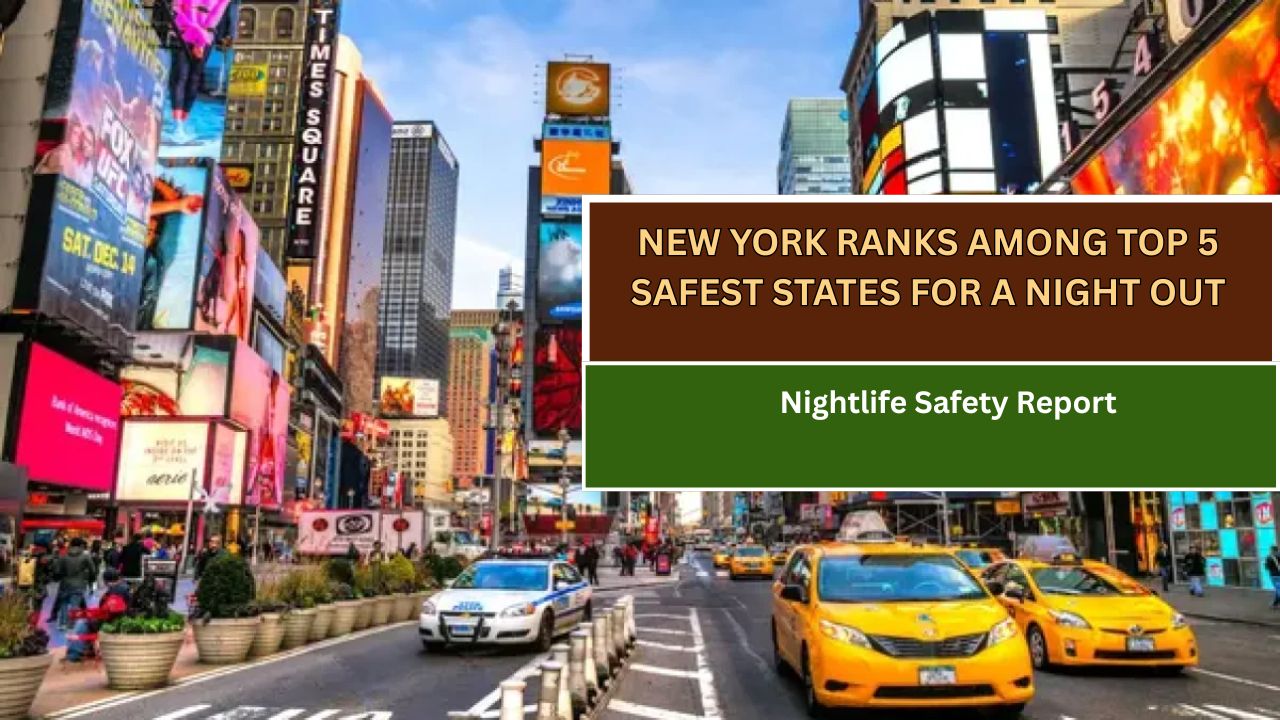NEW YORK, N.Y. — Despite common assumptions about urban crime and bustling nightlife, New York has ranked as one of the top five safest states for an evening out, according to a new study that evaluated risks related to nightlife activity.
The study, conducted by Jason Stone Injury Law, analyzed crime and injury data from all 50 states to assess how safe it is to enjoy a night on the town. The results may surprise many, especially those who associate New York with high crime rates due to its dense population and famous nightlife districts.
“New York came in third overall for nightlife safety,” the report states, citing low rates of fatal crashes, purse snatching, and assaults as key contributors.
Breaking Stereotypes About New York
Though the Empire State has the highest intimidation offense rate in the country—621.61 incidents per 100,000 residents—that number doesn’t tell the whole story.
In fact, New York performed strongly across a range of other metrics, including:
- Low rates of fatal crashes involving drugs or alcohol
- Fewer incidents of assault compared to other states
- Very low rates of purse snatching and pickpocketing
- Strong police presence per capita
Combined, these factors made New York one of the safest places in the U.S. for nightlife activities, whether that means going to a concert in Manhattan, a dinner date in Brooklyn, or a show in Buffalo.
The Top and Bottom of the Nightlife Safety List
While New York landed in the top three, other states didn’t fare as well.
Top 3 Most Dangerous States for Nightlife:
- Tennessee
- Aggravated assault rate: 352.46 per 100,000 residents
- Intimidation offenses: 350.01 per 100,000 residents
- Delaware
- Ranked worst in pickpocketing incidents
- Oregon
- Noted for having the highest purse-snatching rate
“Nightlife safety varies dramatically across the country,” said a spokesperson for Jason Stone Injury Law. “Some states see far more violent or opportunistic crimes after dark.”
Nightlife Safety and Personal Habits
For many Americans, going out at night involves taking personal precautions—especially in areas perceived as less safe. These include:
- Carrying discreet self-defense tools, such as cat-shaped keychains
- Sharing location and expected return times with family or friends
- Avoiding poorly lit or isolated areas
- Staying in groups when possible
But according to the study, people in New York may feel more secure doing fewer of these things due to the higher visibility of law enforcement and well-lit public spaces in nightlife zones.
Why New York Stands Out
So what makes New York, long perceived as chaotic and fast-paced, rank so high in safety?
Key Contributing Factors:
- Robust police presence across neighborhoods and entertainment districts
- Widespread use of public transportation, reducing the need to drive after drinking
- Higher concentration of late-night businesses and activity, deterring isolated crime
- Urban design, including well-lit sidewalks and heavy foot traffic
“We often equate density with danger, but in this case, density appears to offer a protective effect,” the report noted.
What the Data Says
Jason Stone Injury Law used federal crime and transportation data to compile the rankings. The study analyzed multiple safety indicators, including:
- Rates of aggravated assault, intimidation, purse snatching, and pickpocketing
- Fatal crashes involving drugs or alcohol
- Police presence measured by law enforcement officers per capita
- Reports of violent vs. non-violent crimes during late-night hours
The full methodology is available at the Jason Stone Injury Law website, where readers can view rankings and safety tips by state.
Final Thoughts: Nightlife in the Empire State
Whether you’re heading out for a Broadway show, a rooftop bar experience, or a late-night meal, New York may be safer than you think. Despite its size and energy, the state’s combination of public safety infrastructure and lower rates of serious crime means residents and tourists alike can enjoy nights out with confidence.
Still, safety experts encourage everyone—no matter where they live—to follow basic safety practices when going out at night.
This article has been carefully fact-checked by our editorial team to ensure accuracy and eliminate any misleading information. We are committed to maintaining the highest standards of integrity in our content.

Outside of work, he enjoys playing chess, following cricket, and writing short stories. His commitment to integrity and in-depth analysis strengthens OTE News’ mission of providing trustworthy journalism.



